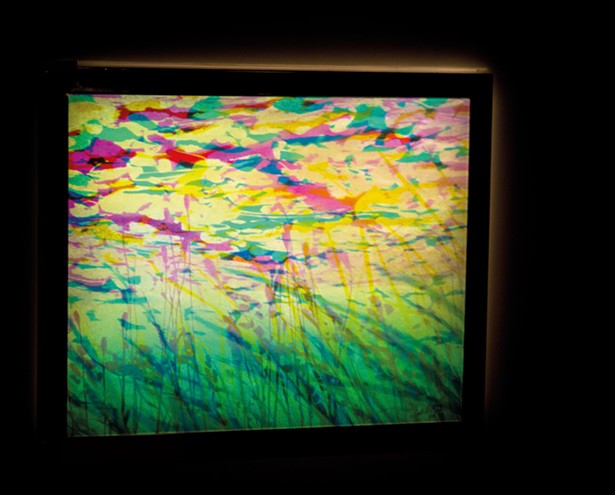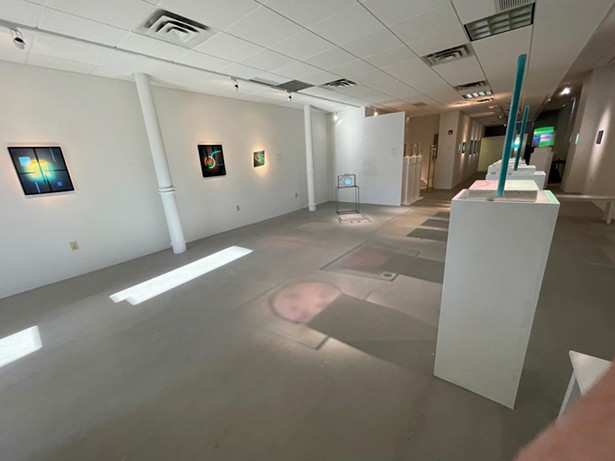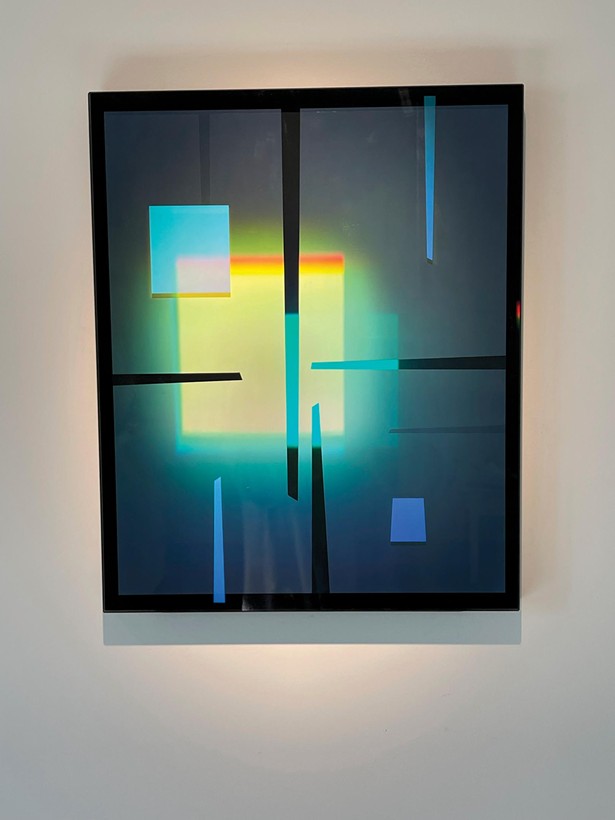How often is a new art form created? Sometimes centuries go by between such breakthroughs. Born around the same time as the Beatles, the hologram is one of the most recent artistic mediums to be developed. (The one before that? Motion pictures, invented in 1895.) And HoloCenter, the only holographic art gallery in the world, is in Kingston, where “Iridescence,” a survey of 11 artists, continues through February 18.
A lot has changed since I visited the Museum of Holography in Manhattan in 1979. Back then most holograms were simple gimmicks—I remember a glowing human skull. These pieces are closer to the late works of Kandinsky, if the dots and lines in those paintings could reach out and touch you.
Holograms are “interactive,” to employ a much-abused term. You know how the eyes of da Vinci’s Mona Lisa follow you around the room? Well, an entire hologram pursues you—and performs for you. The best way to view an installation is to pace back and forth in front of it, like a lawyer conducting a cross-examination. And in some cases, you should bob your head up and down. (Certain holograms are designed to shift horizontally, others both horizontally and vertically.)
Michael Bleyenberg’s Shaman is a shrewd double self-portrait, one image in profile, the other facing forward, in a white half-mask inscribed with geometric designs. It’s the visual equivalent of a Jungian therapy session. Both faces share an elongated, rather archaic fedora.
Ray Park is represented by three tall, sinuous vases. The holograms are on the back, so one may place violets or dried grasses in the vases, and allow their shapes to interact with the art. This is the first functional hologram I’ve ever seen (unless you count the ones on Visa cards).
Betsy Connors’s Light Reef calls attention to the crisis in the world’s oceans with a meticulous reconstruction of a coral reef, glowing ember-red. A protest hologram!
Most of the pieces in “Iridescence” are quite colorful, but Lana Blum’s Birth is a graceful monochrome rendering of a winged dancer.
As with much of today’s technology, it’s more or less impossible to explain how holography works. Here’s one try: A hologram is made by splitting a laser’s light into two separate beams, which bounce off an object to create a three-dimensional image. One might call it sculpting with light. The first holographic picture—of a toy train and a bird—was made by two physicists in 1962. It wasn’t until 1968 that artists became involved.
Eventually first-rate art stars made holographic works: Salvador Dali, Bruce Nauman, Louise Bourgeois, Roy Lichtenstein, and James Turrell. Andy Warhol sat for a holographic portrait while reading a copy of Interview magazine. At one point, there were three museums devoted to the hologram.
By the mid-2000s, the four companies who made the silver halide film emulsion necessary for holograms stopped production. The progress of this art form virtually ground to a halt. Meanwhile, the hologram became a ubiquitous “security” device on credit cards and drivers’ licenses. The Holocenter lost its space on Roosevelt Island, in New York City, during the pandemic, and relocated to 518 Broadway in Kingston last August.
Executive director Linda Law fell under the spell of holograms in 1975, when she entered one of the first shows of the new art at the International Center for Photography. Since then she has performed numerous roles in the world of 3D art: critic, artist, curator, educator—and now administrator.
Law has the delightful idea to teach children in underserved communities how to make holograms. Bring on the next generation of laser-wielding visionaries!















